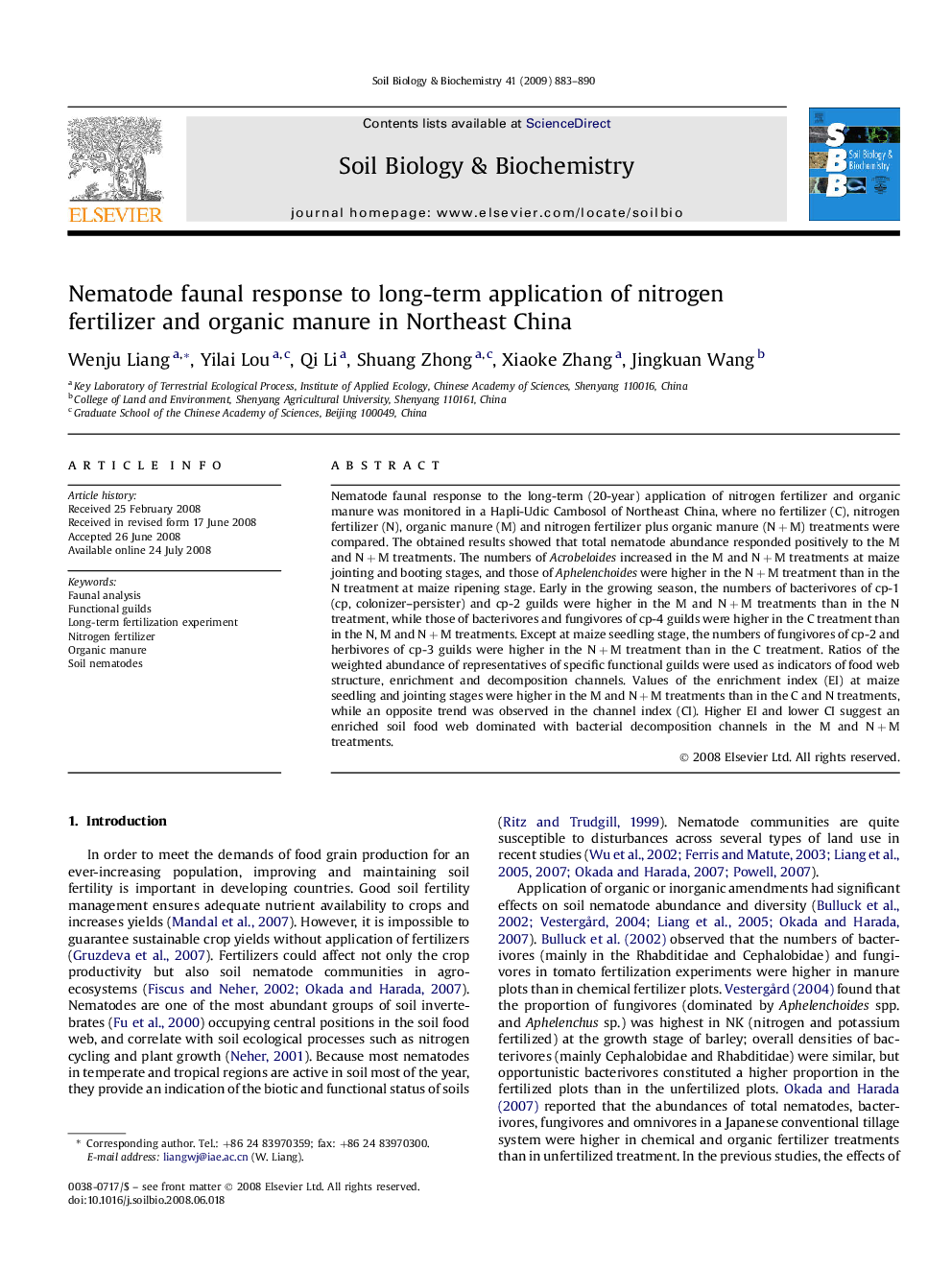| Article ID | Journal | Published Year | Pages | File Type |
|---|---|---|---|---|
| 2025749 | Soil Biology and Biochemistry | 2009 | 8 Pages |
Nematode faunal response to the long-term (20-year) application of nitrogen fertilizer and organic manure was monitored in a Hapli-Udic Cambosol of Northeast China, where no fertilizer (C), nitrogen fertilizer (N), organic manure (M) and nitrogen fertilizer plus organic manure (N + M) treatments were compared. The obtained results showed that total nematode abundance responded positively to the M and N + M treatments. The numbers of Acrobeloides increased in the M and N + M treatments at maize jointing and booting stages, and those of Aphelenchoides were higher in the N + M treatment than in the N treatment at maize ripening stage. Early in the growing season, the numbers of bacterivores of cp-1 (cp, colonizer–persister) and cp-2 guilds were higher in the M and N + M treatments than in the N treatment, while those of bacterivores and fungivores of cp-4 guilds were higher in the C treatment than in the N, M and N + M treatments. Except at maize seedling stage, the numbers of fungivores of cp-2 and herbivores of cp-3 guilds were higher in the N + M treatment than in the C treatment. Ratios of the weighted abundance of representatives of specific functional guilds were used as indicators of food web structure, enrichment and decomposition channels. Values of the enrichment index (EI) at maize seedling and jointing stages were higher in the M and N + M treatments than in the C and N treatments, while an opposite trend was observed in the channel index (CI). Higher EI and lower CI suggest an enriched soil food web dominated with bacterial decomposition channels in the M and N + M treatments.
